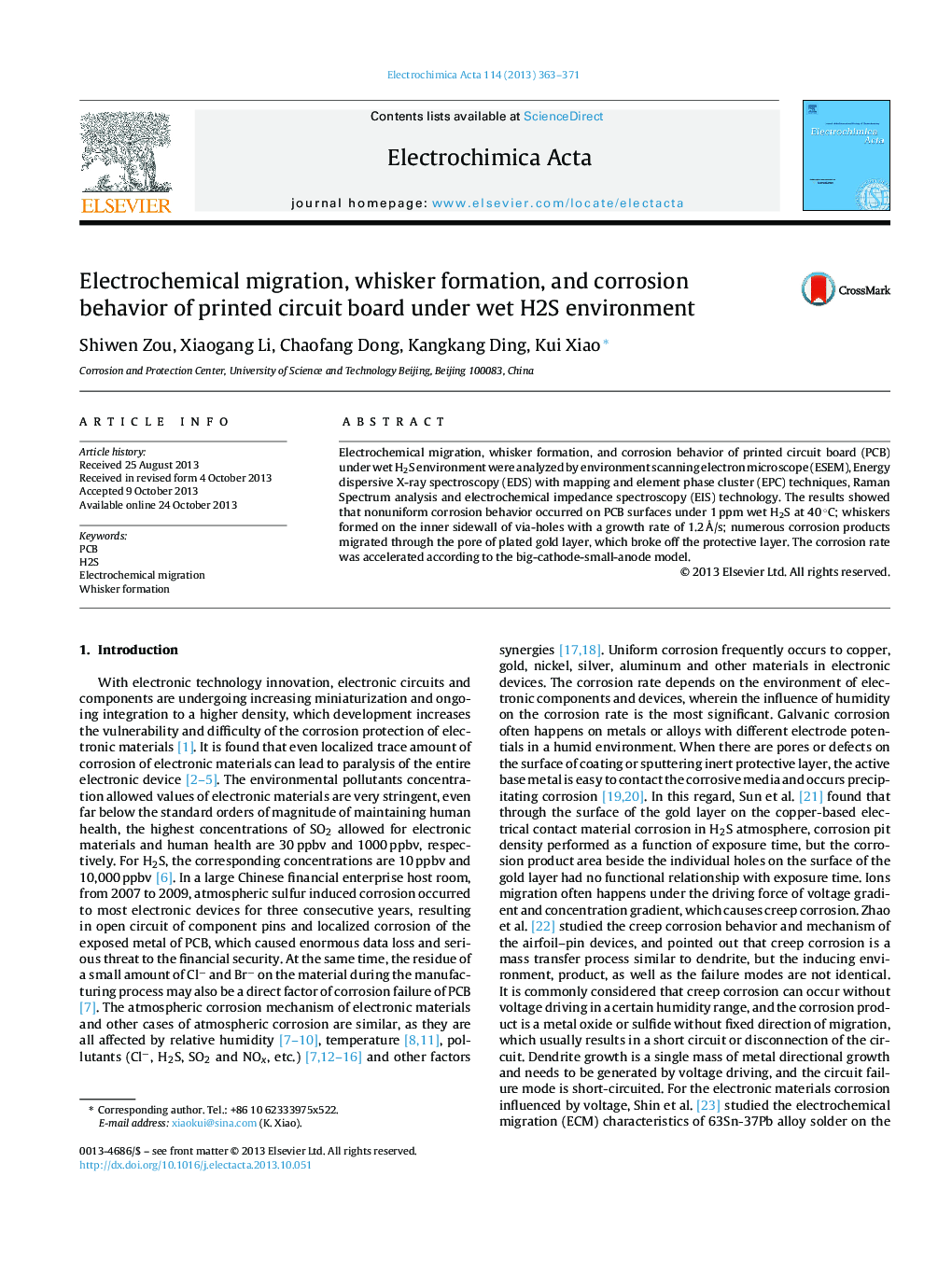| Article ID | Journal | Published Year | Pages | File Type |
|---|---|---|---|---|
| 186473 | Electrochimica Acta | 2013 | 9 Pages |
•The electrochemical migration, whisker formation, and corrosion behavior of PCB under wet H2S environment were observed and studied systematically.•The process of electrochemical migration of solder joints is explained.•The corrosion mechanism of PCB interconnectors induced by micro pores under wet H2S environment is discussed, and the corrosion reaction model is proposed.
Electrochemical migration, whisker formation, and corrosion behavior of printed circuit board (PCB) under wet H2S environment were analyzed by environment scanning electron microscope (ESEM), Energy dispersive X-ray spectroscopy (EDS) with mapping and element phase cluster (EPC) techniques, Raman Spectrum analysis and electrochemical impedance spectroscopy (EIS) technology. The results showed that nonuniform corrosion behavior occurred on PCB surfaces under 1 ppm wet H2S at 40 °C; whiskers formed on the inner sidewall of via-holes with a growth rate of 1.2 Å/s; numerous corrosion products migrated through the pore of plated gold layer, which broke off the protective layer. The corrosion rate was accelerated according to the big-cathode-small-anode model.
